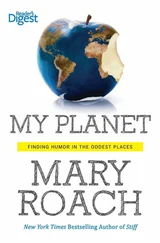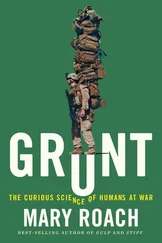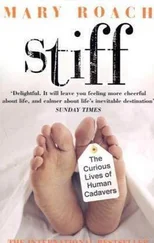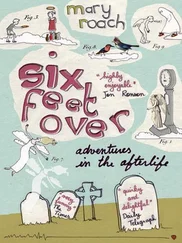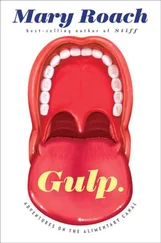Or the average person’s, anyway. “My genes have blessed me with an extraordinary ability to expel some of the byproducts of digestion,” wrote Crouch. “So given that, I thought that it should be tested. In what I thought was a real voluminous and rapidly expelled purge, I failed to move noticeably.” Crouch surmised that his experiment may have been compromised by the “action/reaction of the gas passing through the pants.” Disappointingly, both his flights were mixed-gender, so Crouch was disinclined to “strip down naked” and try it again. He was heading to Cape Canaveral and promised to ask around for some other astronauts’ input, but so far no one is, as they say, spilling the beans.
ASTRONAUT FOOD IN recent decades has grown kinder and more normal. Meals no longer have to be compressed or dehydrated, as there’s plenty of storage room on the International Space Station. Entrées are sealed in plastic pouches, thermostabilized, and then reheated in a small unit that resembles a briefcase. With the 2010 publication of Charles Bourland’s incomparable Astronaut’s Cookbook, it is now possible to whip up eighty-five high-fidelity shuttle-era entrées and sides in your own kitchen, should your own kitchen happen to contain “National 150 filling starch aid from National Starch and Chemical Company” and “caramelized garlic base #99-404 from Eatem Foods.”
For a Mars mission, however, things may get strange all over again.
16. EATING YOUR PANTS
Is Mars Worth It?
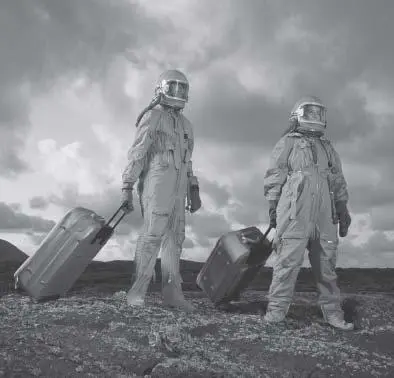
Iwill tell you sincerely and without exaggeration that the best part of lunch today at the NASA Ames cafeteria is the urine. It is clear and sweet, though not in the way mountain streams are said to be clear and sweet. More in the way of Karo syrup. The urine has been desalinated by osmotic pressure. Basically it swapped molecules with a concentrated sugar solution. Urine is a salty substance (though less so than the NASA Ames chili), and if you were to drink it in an effort to rehydrate yourself, it would have the opposite effect. But once the salt is taken care of and the distasteful organic molecules have been trapped in an activated charcoal filter, urine is a restorative and surprisingly drinkable lunchtime beverage. I was about to use the word unobjectionable , but that’s not accurate. People object. They object a lot.
“It makes me sick to have urine in the refrigerator,” said my husband Ed. I had finished running yesterday’s output through the charcoal and the osmosis bag, and had placed it, in a glass bottle, on the door of the fridge pending lunch down in Mountain View. I replied that everything objectionable had been filtered out, and that astronauts don’t mind drinking treated urine. Ed made a flaring motion with his nostrils and said that circumstances would have to be “postapocalyptic” for him to consider it.
My lunch date at Ames is Sherwin Gormly, a waste-water engineer who helped design the rig to recycle urine on the International Space Station. He has been referred to in the press as “the urine king.” This doesn’t bother him. What bothered him was being known, briefly, as the guy who said that the moon might be a good place to store weapons-grade plutonium out of reach of megalomaniacal despots. It wasn’t a serious suggestion; just Gormly idly speculating. That’s what they do down at Ames. In case you didn’t pick this up from Norbert Kraft, the NASA of Ames is a different critter from the NASA of Johnson Space Center. “We’re a think tank here at Ames,” says Gormly. “We’re kinda the wingnuts.” Gormly is dressed in cargo pants and a lavender Henley shirt. There’s nothing especially radical about cargo pants and lavender shirts, but in four trips to Johnson Space Center, I never saw either. Gormly is fit and tan. You’d have to inspect him closely to guess his age correctly; some gray creeping into the blond crewcut, the eyebrows just starting to sprout crazies.
We’re not scheduled to land on Mars until sometime in the 2030s, but it’s always at the back of the collective NASA mind. The things dreamt up for a lunar base these past five years were dreamt with an eye on Mars. Much of the most innovative stuff comes out of Ames. Not that it will all fly. “Nothing we do,” says Gormly, “becomes a space reality until it goes through some filters downstream.” You probably want to run anything Sherwin Gormly gives you through some filters.
Landing a spacecraft on Mars is yesterday’s challenge. Space agencies have been blasting landers to Mars for three decades. (Remember, once a craft reaches space, there’s no air drag to slow it down; it keeps traveling through the vacuum of space without needing more rocket power, aside from small course corrections. Space ships basically coast to Mars. The fuel they’d need is for landing and for the return blast back.) Rockets powerful enough to accelerate an 800-pound lander to Mars are a whole other animal from a rocket that can do so while carrying five or six humans and two-plus years’ worth of supplies.
Back in the sixties, when aerospace scientists assumed that the follow-up to a moon landing would be a manned Mars mission, some fantastical Ames-style creativity was afoot. An obvious alternative to launching 8,000 pounds of food is to grow it—or some of it—on board in greenhouses. But in the early sixties, meat ruled the dinner plate. The space nutritionists, for a brief and wondrous moment, turned their minds to the possibility of zero-gravity ranching. “What type of animal should be taken along to Mars or Venus?” asked animal husbandry professor Max Kleiber at the 1964 Conference on Nutrition in Space and Related Waste Problems. Kleiber held an accommodating view of animal husbandry; he included rats and mice in his calculations along with cattle and sheep. He left the unpretty logistics of zero-gravity slaughter and manure management to others, for Kleiber was a metabolism man. He simply wished to know: Which beast provides the greatest number of calories for the lowest launch weight and feed consumption? To serve beef to two or three Mars astronauts, “a steer of 500-kilogram body weight has to be hauled into space.” Whereas the same number of calories could be derived from just 42 kilograms of mice (about 1,700 of them). “The astronauts,” stated the paper’s conclusion, “should eat mouse stew instead of beef steaks.”
Present at the same conference was D. L. Worf, of the Martin Marietta Company (before Lockheed got there). Worf was big on thinking outside the box, and then eating it. “Food may be processed by many of the same techniques that are used to fabricate structures and shapes from plastic.” Worf did not limit this thinking to food containers but included spacecraft structures normally jettisoned or left behind when preparing to return home. In other words, instead of abandoning the Lunar Module on the moon, the Apollo 11 crew could have broken off pieces to take along and eat on the way home. Thereby needing to carry less food in the first place. Worf envisioned a return-trip menu that included Fuel Tank, Rocket Motor, and Instrument Casing. Leave room for dessert! “Transparent sugar castings as a substitute for windows” also made Worf’s idea list.
You wouldn’t complain about a breakfast of Worf’s egg-albumin office paper if you’d sampled Dr. Carl Clark’s paper cuisine. Clark, a Navy biochemist, was quoted in a 1958 Time article on long-duration spaceflight, recommending that astronauts add shredded paper—the ordinary wood pulp variety—as a “thickener” to a main course of vitamin-and mineral-enriched sugar water. Whether Clark viewed the shredded paper as an aid to palatability, regularity, or document security, I can’t say.
Читать дальше


